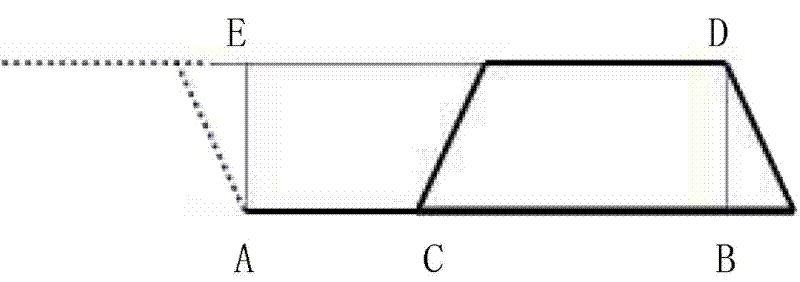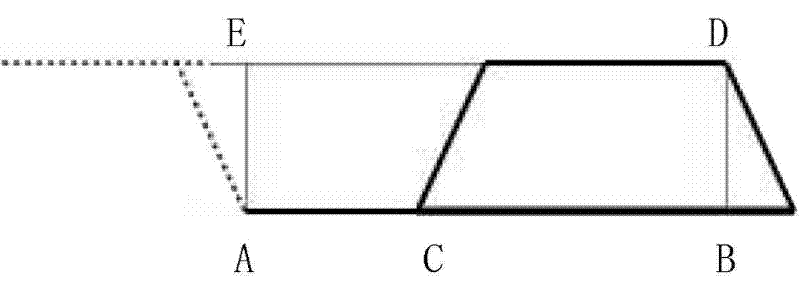Solar compound disinfection method for greenhouse soil
A disinfection method and solar energy technology, which can be applied to soil preparation methods, renewable energy machines, agricultural machinery and equipment, etc., can solve the problems that the temperature does not reach 50°C, does not meet the standard, and cannot effectively kill various diseases and insect pests in the soil, and achieves an improvement. The effect of soil temperature
- Summary
- Abstract
- Description
- Claims
- Application Information
AI Technical Summary
Problems solved by technology
Method used
Image
Examples
Embodiment Construction
[0025] 1. Ditch and ridge. Ditch and ridge the soil in the greenhouse to form a box ridge. The section of the box ridge is as follows: figure 1 As shown, the ridge width AB is 85cm, the ridge height AE or BD is 25cm, and the box ridge bottom width AC is 30cm to carry out ridge ditching. In places where conditions permit, corn stalks and wheat straw can be chopped, mixed evenly with the soil, and then irrigated. The moisture content is not less than 30%.
[0026] 2. Initial disinfection. Cover the sky film and tidy it up, then cover the ground with a plastic film, bury and seal the film edge, cover the film with a soil depth of 5cm, and use high temperature and strong light for 20-25 days in summer.
[0027] 3. Remove the film and lower the ridge. Remove the plastic film on the ground, plow along the center of the ridge surface, and then fill the plowed and loose soil into the ditch to lower the ridge surface by 10cm.
[0028] 4. Add elements. According to the organic matt...
PUM
 Login to View More
Login to View More Abstract
Description
Claims
Application Information
 Login to View More
Login to View More - R&D
- Intellectual Property
- Life Sciences
- Materials
- Tech Scout
- Unparalleled Data Quality
- Higher Quality Content
- 60% Fewer Hallucinations
Browse by: Latest US Patents, China's latest patents, Technical Efficacy Thesaurus, Application Domain, Technology Topic, Popular Technical Reports.
© 2025 PatSnap. All rights reserved.Legal|Privacy policy|Modern Slavery Act Transparency Statement|Sitemap|About US| Contact US: help@patsnap.com



